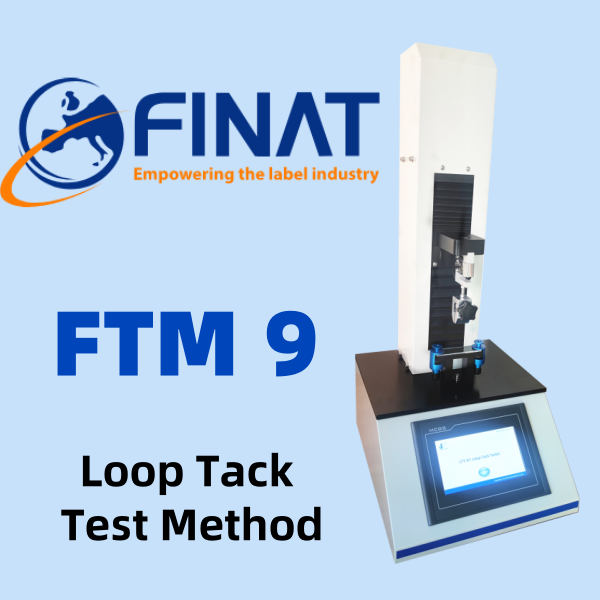
FINAT FTM 9
Loop Tack Test Method
The loop tack test method, standardized as FINAT FTM 9, is a crucial procedure for evaluating the tackiness of pressure-sensitive adhesives (PSAs). Tack is one of the most vital properties of adhesives, particularly for applications involving labeling, tapes, and packaging materials. This test helps manufacturers and quality control professionals determine the adhesive’s initial grab, making it especially valuable in industries where fast adhesion is required.
What Is Loop Tack?
Loop tack refers to the force required to separate a loop of adhesive-coated material from a standard surface at a controlled speed. The test results indicate the ability of an adhesive to create an immediate bond with a substrate.
Test Procedure for FINAT FTM 9
Test Equipment and Conditions
To ensure reliable and repeatable results, the test is conducted using a loop tack tester with a vertical jaw separation rate of 300 mm per minute and an accuracy of ±2%. The standard surface used is a float glass plate, ensuring a uniform testing environment. The test is performed under controlled conditions of 23°C ± 2°C and 50% RH ± 5% RH to eliminate environmental influences.
Step-by-Step Loop Tack Test Process
- Sample Preparation: A strip of adhesive-coated material (25mm wide, 175mm long) is cut from the test sample.
- Loop Formation: The strip is formed into a loop with the adhesive facing outward and clamped into the upper jaw of the tensile tester.
- Contact with Glass Plate: The loop is brought into contact with the glass plate at 300 mm per minute.
- Separation Measurement: The machine immediately reverses direction to measure the force required to separate the loop from the glass surface.
- Recording Results: The peak force (loop tack value) is recorded in Newtons. If paper tearing (PT) or adhesive transfer (AT) occurs, it is noted in the results.
Factors Influencing Loop Tack Test Results
Several variables can affect the loop tack test outcome:
- Adhesive Composition: Different adhesives exhibit varying tack properties.
- Backing Material Rigidity: Stiff materials may alter test results.
- Surface Cleanliness: The glass plate must be free from contaminants like grease or dust.
- Testing Conditions: Variations in temperature and humidity can impact adhesion behavior.
Why Traditional Methods Fall Short?
While older methods like the roll ball test (GB/T 4852-2002) are still used, they suffer from inconsistencies due to manual handling and environmental variables. The loop tack test eliminates these issues by standardizing speed, pressure, and contact area, making it the preferred choice for global compliance.
Choosing the Right Loop Tack Tester
For precise and repeatable loop tack testing, the LTT-01 Loop Tack Tester by Cell Instruments is an ideal solution. This advanced instrument offers:
- 7-inch touch screen for intuitive operation.
- PLC control system for accurate and repeatable results.
- Adjustable speed and stroke settings to meet various test requirements.
- Microprinter and RS232 port for efficient data output and analysis.
- Compliance with FINAT FTM 9, PSTC-16, and ASTM D6195 standards.
Contact Us Get Loop Tack Testing Solution
FINAT FTM 9 is a fundamental standard for evaluating pressure-sensitive adhesives using the loop tack test method. By following proper procedures and using a loop tack tester, manufacturers can ensure high-quality adhesive performance. For advanced testing solutions, Cell Instruments’ Loop Tack Tester is an industry-leading choice.
FAQs
The loop tack test determines the initial adhesive strength of pressure-sensitive materials, crucial for labels, tapes, and packaging applications.
Variables such as adhesive formulation, backing material rigidity, surface cleanliness, and environmental conditions impact test outcomes.
It meets FINAT FTM 9, PSTC-16, and ASTM D6195 standards for loop tack testing.
Industries including packaging, medical tapes, automotive, and electronics rely on loop tack testing for quality control.

